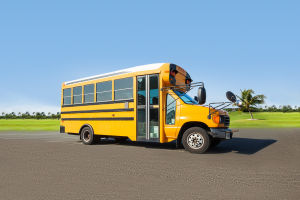Snowmobiles are an exciting and fun winter sport, but for novices, how to drive safely and smoothly in the snow is crucial. Compared with cars or motorcycles, snowmobiles require higher physical coordination, reaction ability and environmental adaptability of the driver.
The following three core skills can help us master the basic driving essentials, ensure safety and improve the driving experience.
1. Master the balance skills and control the stability of the vehicle body
Unlike vehicles on ordinary roads, snowmobiles require drivers to keep the vehicle body stable by adjusting the center of gravity of the body. Balance control is particularly important when driving on rugged snow, turning and high speed.
Correct sitting posture
Sit in the center of the seat and avoid leaning forward or backward too much, so that the vehicle body can remain stable.
Put your feet on the pedals and bend your knees slightly to adapt to the bumps of the snowmobile on uneven roads.
Bend your arms naturally and hold the handlebars easily. Do not force them to be stiff, otherwise it will affect the steering operation.
Turning skills: Lean your body with the vehicle
Snowmobiles are not like cars. You cannot turn by turning the handlebars alone. We need to use the tilt of our body to assist in turning.
When making a small turn, gently tilt your body in the direction of the turn to let the snowmobile turn with the trend.
When making a large turn, you need to stand up, move your center of gravity slightly forward, and lean your body deeper to increase the contour contact area and ensure grip.
In areas with soft snow, you should reduce your speed appropriately when turning, otherwise it may cause rollover or sinking into the snow.
Balance adjustment for different terrains
- In new snow: New snow is soft and can easily cause wheels to slip or get stuck. At this time, you need to lean forward slightly to increase the pressure on the front wheels and improve traction.
- On icy roads: The ice surface is extremely slippery. Avoid sudden acceleration or sudden braking when driving, and sink your center of gravity to improve stability.
- When going uphill: Lean forward and keep the center of gravity close to the front of the vehicle to prevent the front of the vehicle from tilting up due to lack of grip.
- When going downhill: Sit back to increase the traction of the rear wheel, while keeping the speed under control to avoid losing control and sliding down.
2. Properly control speed and master braking skills
The snowy environment is complex and changeable, and speed control is crucial. Going too fast may increase the risk of losing control, while going too slow may cause the snowmobile to get stuck in the snow. Mastering speed adjustment and braking skills can help us drive more safely.
Reasonably control acceleration
When starting, accelerate slowly and do not step on the accelerator hard, otherwise it may cause the wheels to slip on the snow.
In flat areas, you can gradually increase the speed, but you still need to keep it within a controllable range to avoid sudden obstacles and being unable to brake in time.
In places with thick snow, properly increasing the speed will help the vehicle pass smoothly, while going too slow will make it easy to get stuck in the snow.
Predict the braking distance in advance
The braking distance on snow is much longer than on ordinary roads, so when encountering obstacles, turning or needing to stop, you must predict in advance and slow down gradually.
Generally speaking, when driving on snow, the braking distance may be 2-3 times that of ordinary roads, especially on ice, the braking distance may even reach more than 4 times.
Use the brakes correctly
- Lightly brake: Avoid sudden braking, and apply force slowly to gradually reduce the speed of the vehicle to prevent skidding or rollover.
- Cooperate with the accelerator: In some cases, especially on icy roads, lightly braking and slightly accelerating at the same time can improve control and prevent the vehicle from losing control.
- Emergency brake: If you encounter an emergency and need to stop quickly, you can use the handbrake and foot brake at the same time, but control the force to prevent the tires from completely locking.
3. Observe the environment and plan the route
Snowmobiles are usually driven outdoors, and the terrain may be complex and changeable, so it is important to maintain a clear field of vision and plan the route in advance.
Maintain a good field of vision
In a white snowy environment with strong sunlight, the reflection of the snow may affect your vision, so it is recommended to wear protective glasses to reduce glare interference.
If you are riding at night or in a low-visibility environment, be sure to turn on the lights and try to avoid driving at high speeds to avoid missing obstacles due to limited vision.
Identify terrain and obstacles
- Avoid driving on unknown ice: If you are not sure whether there is a frozen lake ahead, try to detour to avoid danger caused by cracked ice.
- Pay attention to hidden obstacles: Branches, stones or gullies may be hidden in the snow, so you should always be alert to avoid sudden obstacles.
- Follow snow tracks: If there are tracks left by other snowmobiles, try to follow the existing route to reduce the possibility of the vehicle skidding and reduce energy consumption.
Keep a safe distance
If you are traveling with other snowmobile riders, you should keep a certain distance to avoid collisions due to insufficient emergency braking.
Avoid driving side by side on turns or narrow roads to prevent accidents when the vehicles skid out of control.
Key to getting started
For friends who are driving snowmobiles for the first time, mastering balance skills, speed control and environmental judgment are the three core elements of safe driving.
1. Mastering balance skills: correct sitting posture, reasonable body tilt, and adapting to different terrain changes will help improve driving stability.
2. Control speed and brakes: accelerate gradually, predict braking in advance, and ensure a safer driving process.
3. Keep vision and plan routes: identify terrain changes, avoid obstacles, and follow existing tracks to make driving smoother.
As long as we master these skills and continue to accumulate experience in practice, we can have more fun in snowmobile driving while ensuring our own safety!

